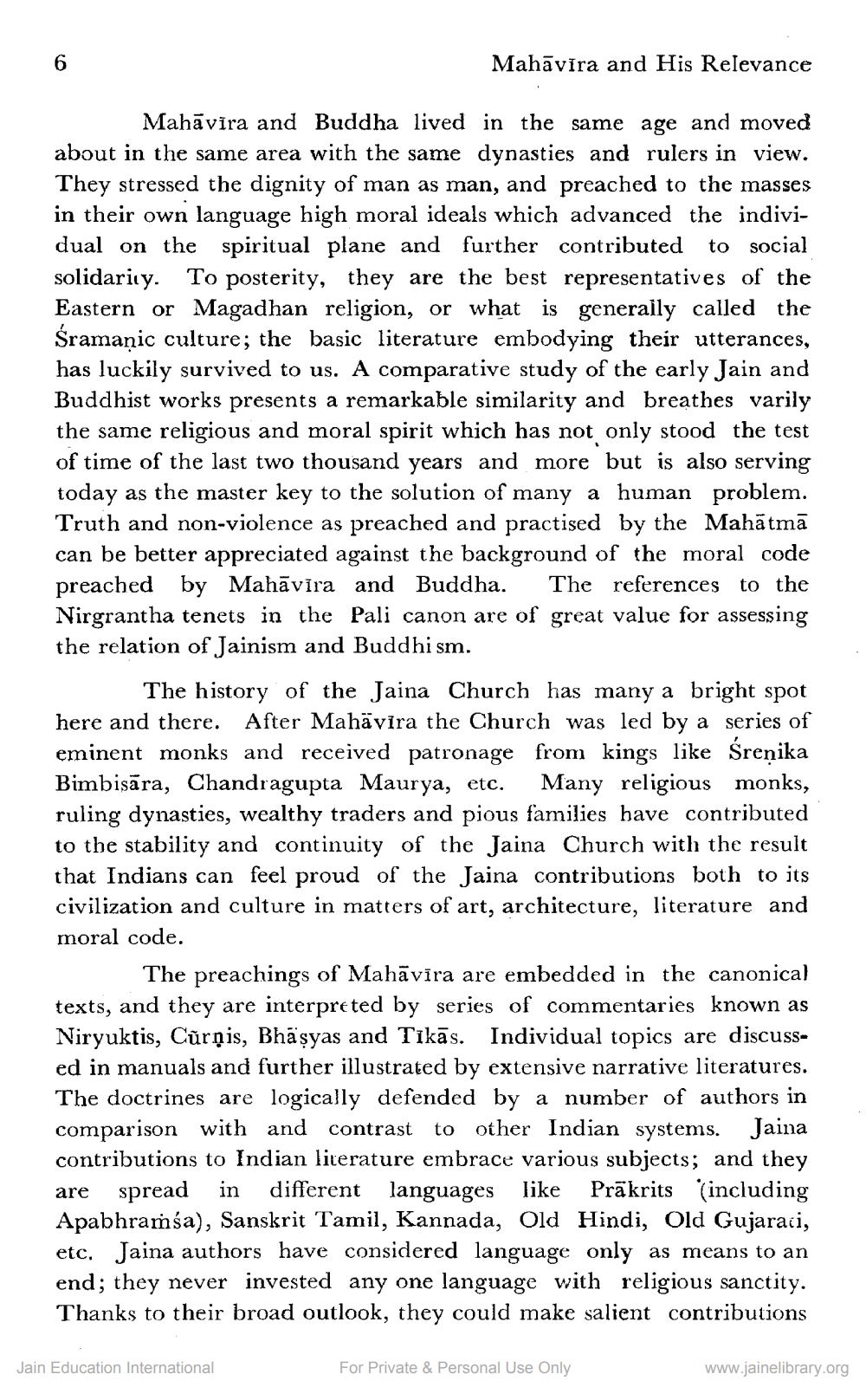________________
Mahāvira and His Relevance
Mahāvīra and Buddha lived in the same age and moved about in the same area with the same dynasties and rulers in view. They stressed the dignity of man as man, and preached to the masses in their own language high moral ideals which advanced the individual on the spiritual plane and further contributed to social solidarity. To posterity, they are the best representatives of the Eastern or Magadhan religion, or what is generally called the Sramanic culture; the basic literature embodying their utterances, has luckily survived to us. A comparative study of the early Jain and Buddhist works presents a remarkable similarity and breathes varily the same religious and moral spirit which has not only stood the test of time of the last two thousand years and more but is also serving today as the master key to the solution of many a human problem. Truth and non-violence as preached and practised by the Mahātmā can be better appreciated against the background of the moral code preached by Mahāvīra and Buddha. The references to the Nirgrantha tenets in the Pali canon are of great value for assessing the relation of Jainism and Buddhism.
The history of the Jaina Church has many a bright spot here and there. After Mahävira the Church was led by a series of eminent monks and received patronage from kings like Śreņika Bimbisāra, Chandragupta Maurya, etc. Many religious monks, ruling dynasties, wealthy traders and pious families have contributed to the stability and continuity of the Jaina Church with the result that Indians can feel proud of the Jaina contributions both to its civilization and culture in matters of art, architecture, literature and moral code.
The preachings of Mahāvīra are embedded in the canonical texts, and they are interpreted by series of commentaries known as Niryuktis, Cũrņis, Bhäşyas and Tīkās. Individual topics are discussed in manuals and further illustrated by extensive narrative literatures. The doctrines are logically defended by a number of authors in comparison with and contrast to other Indian systems. Jaina contributions to Indian literature embrace various subjects; and they are spread in different languages like Prākrits (including Apabhramsa), Sanskrit Tamil, Kannada, Old Hindi, Old Gujarati, etc. Jaina authors have considered language only as means to an end; they never invested any one language with religious sanctity. Thanks to their broad outlook, they could make salient contributions
Jain Education International
For Private & Personal Use Only
www.jainelibrary.org




